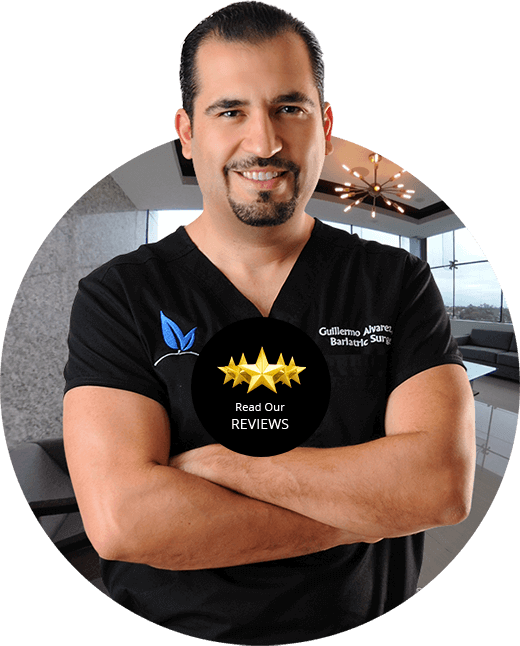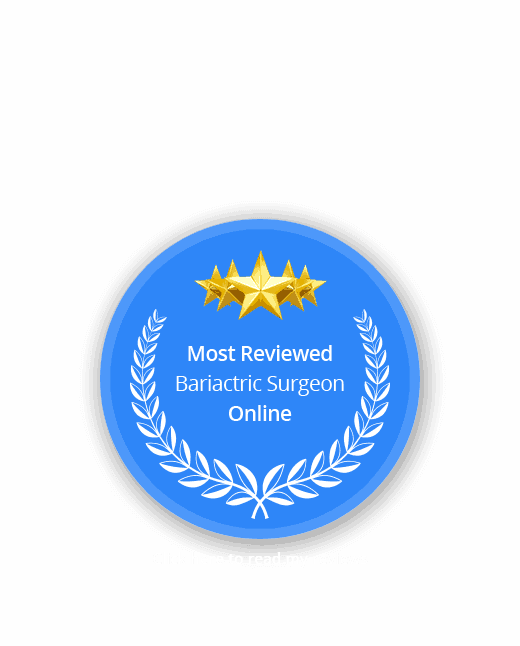Laparoscopic adjustable gastric banding (better known as Lap Band) has been a popular bariatric surgery since the early 2000s. But with gastric sleeve gaining favor among doctors and patients alike, many people are wondering how the two procedures stack up. Let’s take a look at a few of the most important elements.
Comparing the Procedures
Lap Band and gastric sleeve both use laparoscopic techniques, meaning they’re minimally invasive “key hole” surgeries. During Lap Band surgery, a silicone band is sewn around the top of the stomach (hence the “banding” part of laparoscopic adjustable gastric banding). This band has an inflatable ring that can be filled with varying amounts of saline solution in an effort to limit the amount of food a patient can eat at one time. Patients typically recover quickly from the surgery and either spend one night in the hospital or are treated as outpatients.
During the gastric sleeve procedure, 60 to 80 percent of the stomach is removed. This includes most of the stomach section that produces ghrelin, the “hunger hormone.” So while both procedures make you feel full sooner, only gastric sleeve decreases general hunger.
Also, thanks to years of experience and tens of thousands of successful gastric sleeves, my procedures take only 25 to 30 minutes. This means my patients experience less anesthesia and fewer risks during and after surgery. Patients usually stay with us two days after surgery.
Lap Band is adjustable and reversible, while gastric band is neither. But while the “adjustable” part sounds good in theory, what that really means is that it requires ongoing maintenance. We’ll cover that in the next section.
The First Year
Patients opt for bariatric surgery to lose weight, so which one wins in that department? About five years down the road, overall weight loss is about equal. But gastric sleeve patients lose weight faster in the beginning, when people often need the motivation to keep going. Not only do gastric sleeve patients lose weight faster, but they tend to hit lower “low weights” than Lap Band patients.
Back to that maintenance. Lap Band patients will have multiple follow-up visits wherein the doctor will add or remove saline. Doctor visits are most frequent in the first year, though they continue well after that period to adjust the saline and fine-tune the equipment left in the body as the patient loses weight.
On the other hand, gastric sleeve has no maintenance because no foreign objects are left in the body. This also eliminates complications like erosions and band slippage that can occur with Lap Band. And speaking of complications, gastric sleeve patients can have a slightly higher risk of short-term complications (though only a minute percentage of my patients have any kind of post-op complications), while Lap Band patients have a higher risk of long-term complications—like band intolerance, band leak, or infections/dislodgement/leak of the skin port used to fill the band.
Living with Lap Band vs. Gastric Sleeve
A big difference in patient lifestyle has to do with the sensation of hunger after the procedure. Gastric sleeve patients feel much less hungry than before, thanks to a dramatic reduction in ghrelin, as well as up to 80 percent of the stomach being removed. Lap Band patients don’t typically experience this decrease in hunger because their stomach remains in place.
Unlike many other bariatric surgeries, gastric sleeve patients rarely have problems with food intolerance. It’s not uncommon for Lap Band patients, however, to experience issues such as vomiting or reflux when eating certain foods.
While some aspects of Lap Band and gastric sleeve are similar, there are several differences that can affect a patient’s quality of life. Talk with an Endobariatric team member today to learn about the opportunities—and the challenges—associated with gastric sleeve surgery.
Visit our website www.endobariatric.com and see for yourself what we have done here in Endobariatric for thousands of patients with more than satisfactory results, you can check it with the images that we have on “Before and after” of our patients with surprising changes.
I invite you to follow us on all our social networks, we are on Facebook (Endobariatric), Instagram (@endobariatric), we also have our YouTube channel where where I (Dr. Alvarez) answer frequently asked questions that are sent to me, subscribe to it! we talk about very interesting subjects, find us searching for Endobariatric.
If you want a more personalized experience and you have Instagram and Tik Tok, follow me (Dr. Alvarez) to see my day both in my daily routine and in the operating room, add me! We will have a great time! My username is: gmoalvarez (Instagram) and gmoalvarezofficial (Tik Tok).
“Changing lives…one sleeve at a time”.









